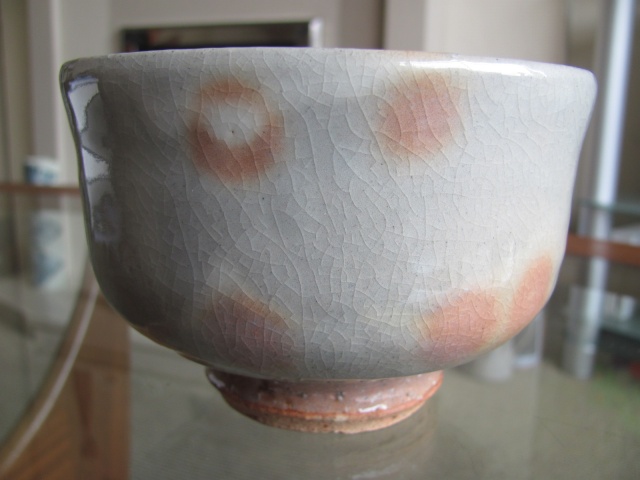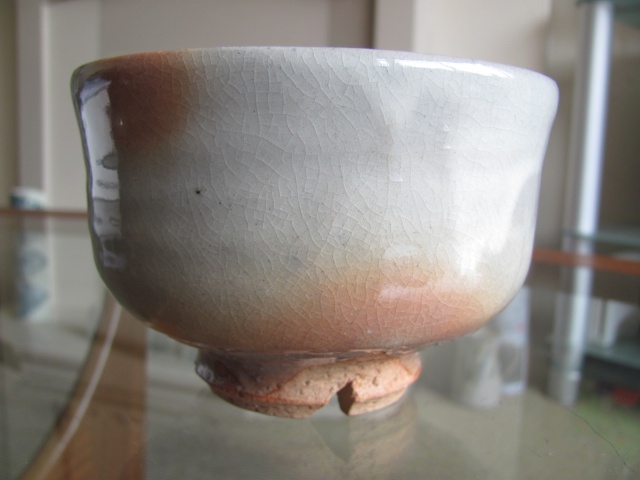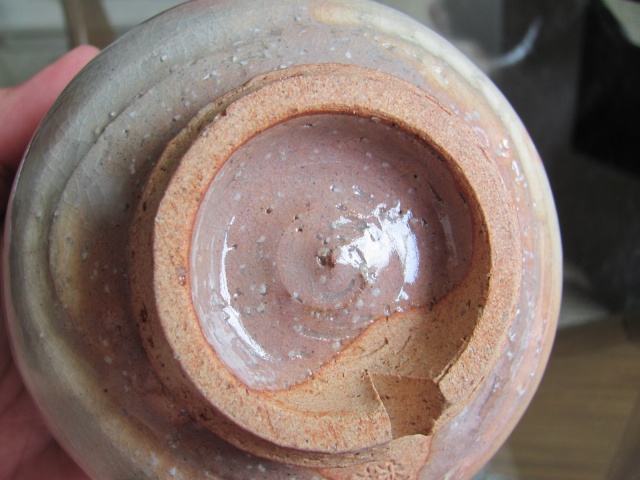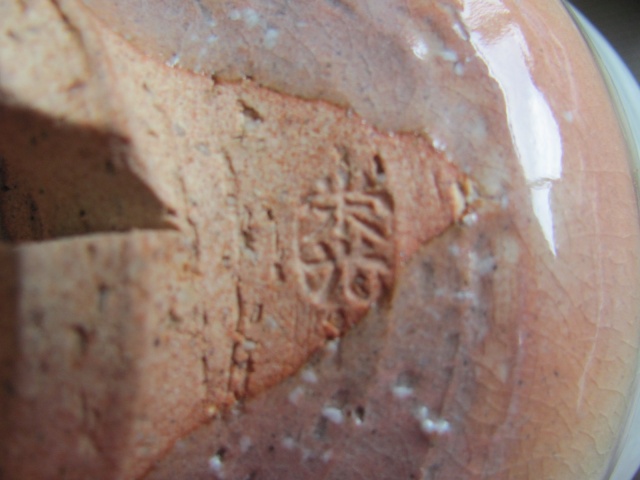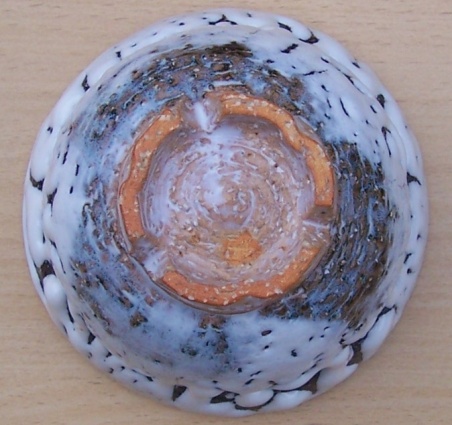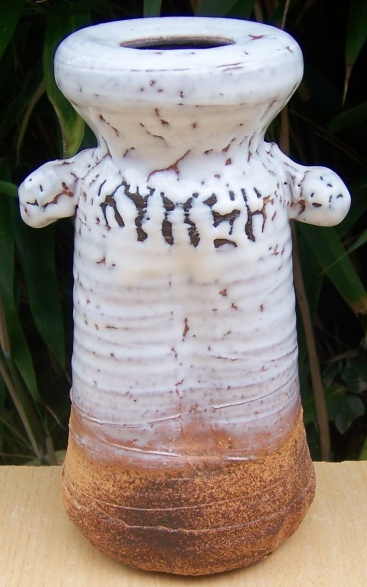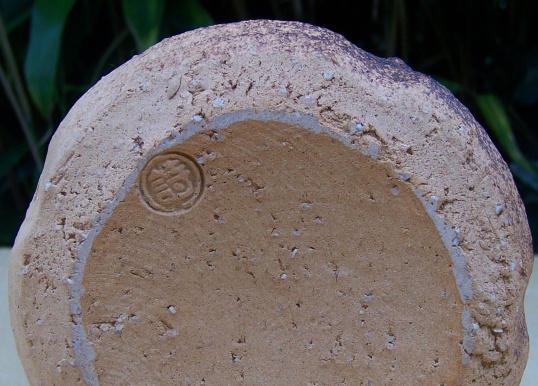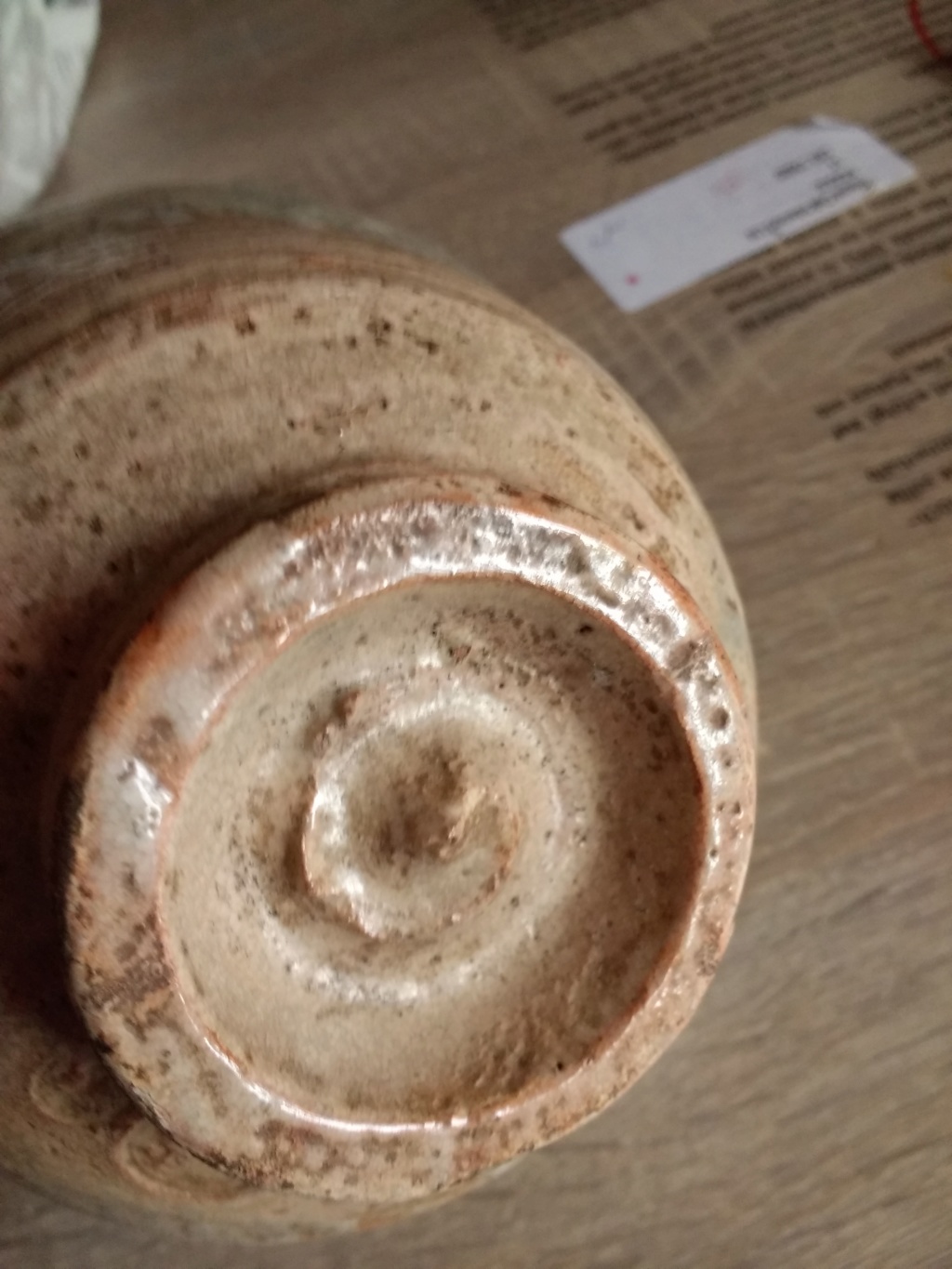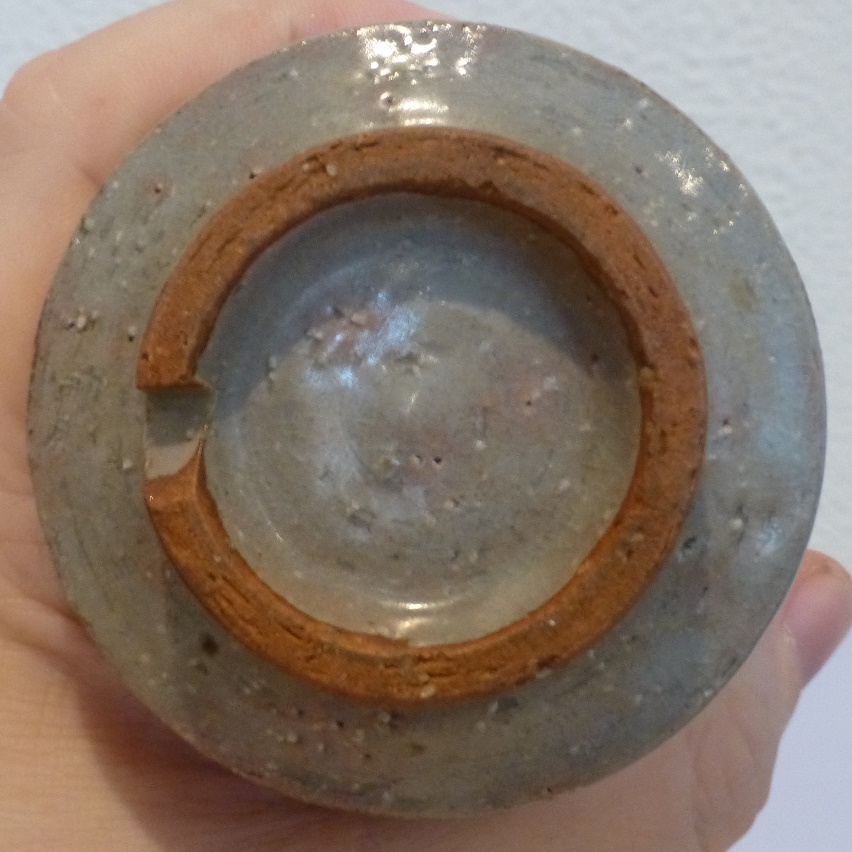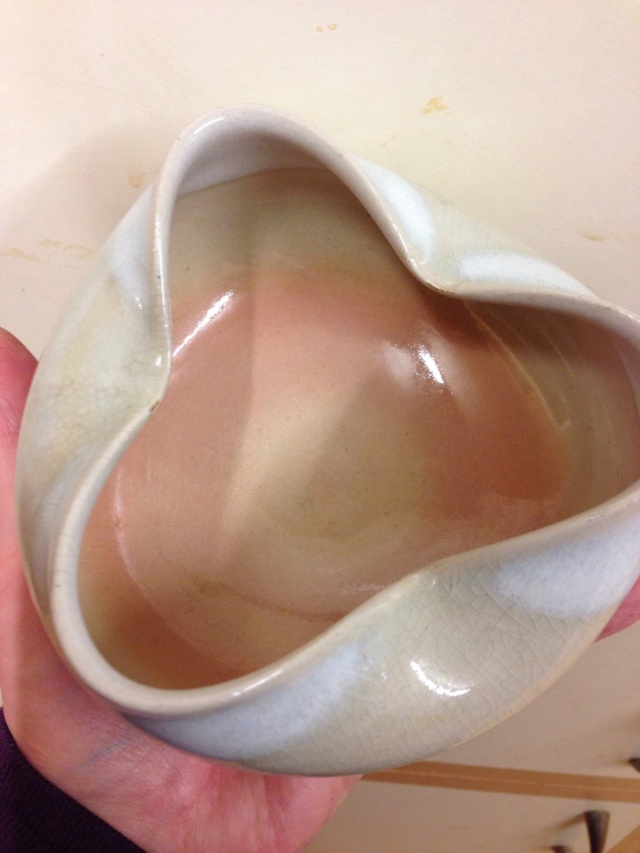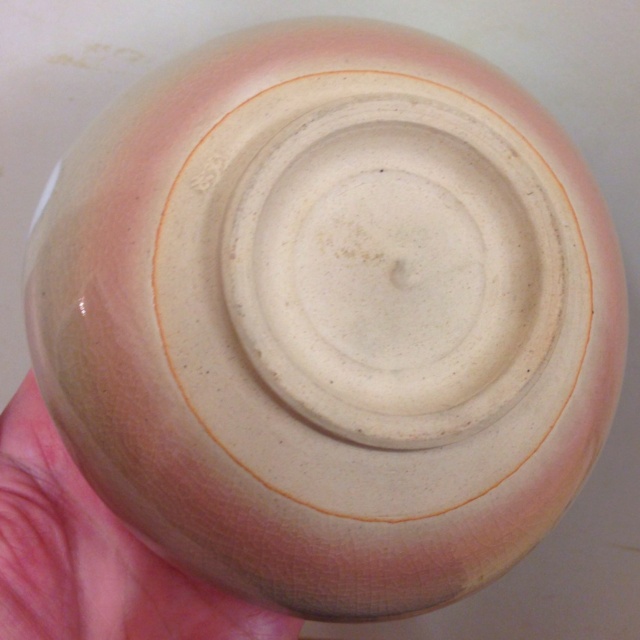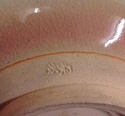Hagi ware, Japan
4 posters
20th Century Forum :: Pottery Identification / Research :: Far Eastern Pottery :: Japanese & Korean Studio Pottery
Page 1 of 1

Davee- Consultant

-
 Number of posts : 2211
Number of posts : 2211
Age : 54
Location : West Mids UK
Registration date : 2009-07-26
 Re: Hagi ware, Japan
Re: Hagi ware, Japan
It's a Hagi chawan. The wari kodai (cut foot) is typical of pottery from in and around Hagi City and the glaze is also one of the two most typical glazes they use there.
I have a book that shows members of the Hagi Association of Ceramic Artists in 2004, which is almost entirely in Japanese, so I'll see if I can find the mark.
I have a book that shows members of the Hagi Association of Ceramic Artists in 2004, which is almost entirely in Japanese, so I'll see if I can find the mark.
_________________
Now you should know by now that Potty and I need to see your bottom - we're funny that way!
 Re: Hagi ware, Japan
Re: Hagi ware, Japan
Been through the book of over 100 members and can't find the mark but it's definitely Hagi.
_________________
Now you should know by now that Potty and I need to see your bottom - we're funny that way!
 Ken Komatsu
Ken Komatsu
An Oni-Hagi chawan by Ken Komatsu.
This is perhaps the most typical Hagi glaze there is. Oni means demon or devil, which are thought of as lucky in Japan. The glaze is a think white affair that is made in order to crawl during firing and is said by some to represent cherry blossom.
One important point to note about Hagi teabowls is that they leak when initially used, which is something that is regarded as a positive feature believe it or not. The pores in the gritty porous clay do get filled with use.
This is perhaps the most typical Hagi glaze there is. Oni means demon or devil, which are thought of as lucky in Japan. The glaze is a think white affair that is made in order to crawl during firing and is said by some to represent cherry blossom.
One important point to note about Hagi teabowls is that they leak when initially used, which is something that is regarded as a positive feature believe it or not. The pores in the gritty porous clay do get filled with use.
Last edited by studio-pots on August 23rd 2015, 10:50 am; edited 1 time in total
_________________
Now you should know by now that Potty and I need to see your bottom - we're funny that way!
 Re: Hagi ware, Japan
Re: Hagi ware, Japan
Fascinating stuff SP, thanks for the info.
_________________
skay wrote:
 Let's do some bumping please.
Let's do some bumping please.
Davee- Consultant

-
 Number of posts : 2211
Number of posts : 2211
Age : 54
Location : West Mids UK
Registration date : 2009-07-26
 Shibuya Deishi
Shibuya Deishi
_________________
Now you should know by now that Potty and I need to see your bottom - we're funny that way!

Davee- Consultant

-
 Number of posts : 2211
Number of posts : 2211
Age : 54
Location : West Mids UK
Registration date : 2009-07-26
 Re: Hagi ware, Japan
Re: Hagi ware, Japan
Yes, Japanese Hagi ware. Worth checking if the stamp is Seigan Yamane. I have some of his but they’re all packed away at the moment
_________________
Carrot cake is just fake cake
 Re: Hagi ware, Japan
Re: Hagi ware, Japan
My initial research had led me Seigan Yamane but I haven't seen any with the double mark like this.
_________________
skay wrote:
 Let's do some bumping please.
Let's do some bumping please.
Davee- Consultant

-
 Number of posts : 2211
Number of posts : 2211
Age : 54
Location : West Mids UK
Registration date : 2009-07-26

MCWebs- Number of posts : 726
Location : GB
Registration date : 2017-09-24
 Re: Hagi ware, Japan
Re: Hagi ware, Japan
Traditional Japanese yunomi but I’m afraid I’ve no idea what the mark says
_________________
Carrot cake is just fake cake
 Hanamaki Kumi-yunomi, Kurabito, Hagi ware from Japan
Hanamaki Kumi-yunomi, Kurabito, Hagi ware from Japan
Last edited by NaomiM on February 7th 2024, 2:59 am; edited 1 time in total
_________________
Carrot cake is just fake cake
 Mashino Kiln. Possiby by Tatsuro Seki, made for Asemi Co, Iga ware
Mashino Kiln. Possiby by Tatsuro Seki, made for Asemi Co, Iga ware
_________________
Carrot cake is just fake cake
20th Century Forum :: Pottery Identification / Research :: Far Eastern Pottery :: Japanese & Korean Studio Pottery
Page 1 of 1
Permissions in this forum:
You cannot reply to topics in this forum
